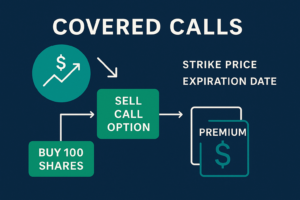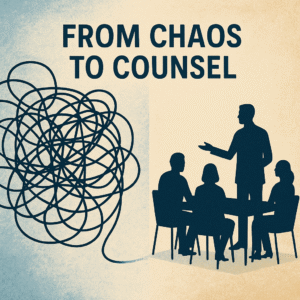There is a kind of stillness now that looks like comfort, but isn’t.
A kind of scrolling that feels like movement, but isn’t.
A kind of watching that feels like knowing and understanding, but isn’t.
It’s as if we’ve all boarded a train we never meant to ride—one with no conductor, no stops, and no clearly-defined destination. We weren’t coerced. We were offered convenience. Frictionless designs. Personalized pathways. Infinite content. “If you liked that, you might also like this.” And before long, we’re not choosing anymore—we’re following.
This may be slightly alarmist, but hopefully under wraps. Technology, at its best, is a forge of connection, bringing stories and information to others that can power up human ingenuity. But what’s emerged across platforms isn’t authentic connective tissue—it’s algorithmic anesthesia. A slow, subtle sedative that doesn’t dull pain so much as it defers presence. It doesn’t put us to sleep—it entrains us. Our rhythms sync to its feed cycles. Our decisions thin into impulses. Our days become repetitions of last night’s loops.
The Test-and-Fail Mind, Hijacked
Long before platforms, before protocols or terms of services, we were pattern-seeking creatures. Our minds evolved through the logic of test and fail: bitter berry, better berry, buttery berry, maybe a mushroom—maybe not. We tried, we learned, we refined and we passed it on. This was the original intelligence loop: sensory engagement, risk exposure, internal synthesis. Experience, not curation, was the path to discernment.
Now, the loops are pre-built. Recommendation engines present adjacent options with zero risk. The edge is rounded off. There’s no bad berry—only a slightly less-optimized scroll. Each click tightens the circle, reinforcing proximity over possibility. We don’t leap—we ooze. We’re not navigating the plains of potential; we’re swimming in an aquarium of backpropagation and Bayesian inference.
This isn’t inherently malicious. These tools were born from an intention to serve. “What do you want to watch, purchase or know more about?” But when that service removes the very conditions through which growth occurs—trial, friction, pause—it doesn’t make us more alive. It makes us passive. We outsource curiosity to the feed. And over time, what was once evolution becomes entrainment.
Subservience by Optimization
We often think of subservience as something physical or authoritatively imposed—chains, commands, control. But in this age, subservience is achieved through optimization. Not against our will, but through it. We are guided gently by a thousand tiny conveniences: one-click shipping, instant search results, passive scrolls that never ask for confirmation. Each iteration is designed to keep us moving forward—but less likely to awaken movement inward—toward reflection, self-awareness, or meaning-making.
To be de-risked is not to be protected. It’s to be softened, leveled, nudged until resistance feels inefficient and reflection feels indulgent. Optimization may reduce error or “enhance user satisfaction,” but it also erases pause. And without pause, we lose the ability to decide what’s worth continuing.
It’s not just our habits being shaped. It’s our will. The very muscle of volition—our ability to stop, question, redirect—is atrophying under a regime of perpetual ease. We’re not being deceived. We’re being lulled—gently but persistently—into forgetting that agency has a texture. It resists smoothness. It carries weight. It demands tension. Platforms don’t demand loyalty. They disincentivize departure to more sovereign pastures.
This is how optimization becomes ideology—not by conquest, but by corrosion. Not through suppression, but substitution. And so we continue—not because we must, but because choosing otherwise feels unfamiliar, effortful, or absurd.
But effort is not the enemy. It is the entrance.
The Debt of Distraction
There is a cost to every glance, every swipe, every half-second of partial presence. But unlike money, attention debt doesn’t show up on a statement. It accrues silently—in deferred dreams, fractured focus, and relationships thinned by the haze of elsewhere. This is the new indebtedness: not material, but cognitive. Not imposed, but still inundating. We spend our attention in micro-engagements, and rarely ask what we’re buying.
Distraction isn’t free. It simply invoices us later—in hours unaccounted for, in books unread, in projects left unrealized, in conversations half-held. And because the payments are dispersed, we don’t notice the principal compounding: a slow erosion of agency masquerading as minor compromise. Exploitative marketers treat attention like currency—eyeballs to be bought, sold, repackaged and scaled. But we rarely ask: who’s doing the spending, and what’s getting traded away?
Attention is not just a resource. Attention is a structural force in how we live. What we attend becomes what we believe, what we build, and who we become. When our attention is captured by design, we forfeit our ability to allocate it by choice. And when we lose that, we lose more than time—we lose authorship of our own stories.
The encouraging news is this is not irreversible. The moment we notice the cost; we’ve already begun to reclaim the ledger. The ability to choose what to notice, what to nourish, and what to release—that is still within each and every one us. And no one, not even the most refined algorithm, can take that without consent.
Entrainment vs. Entertainment
Entertainment once offered a break from reality. A reprieve. A chance to laugh, wonder, dream or to find inspiration. It was something you chose intentionally—then exited. Something you remembered—then returned from.
Entrainment is different. It’s not an escape from the world; it’s an override of your rhythm within it. It doesn’t offer you a narrative arc. It loops. It doesn’t ask for your attention once—it pulses until you forget it was ever yours to direct.
To be entrained is to be synced to an external cadence. A rhythm not born of your breath, your work, or your will—but of someone else’s optimization or promotion schedule. When a platform predicts your behavior and serves content before you know you want it, that’s not magic. It’s pattern lock-in. It’s a treadmill disguised as a buffet.
And over time, the line between choosing and following dissolves. We call it “watching something” when in truth, it’s watching us—to see how long we’ll stay, how much we’ll surrender, what we’ll click next and how tightly we’ll loop.
This isn’t a call to abandon joy. Or story. Or leisure. It’s a call to notice your rhythm. To pause mid-loop and ask: what cadence am I entrained to? Is it mine—or does it belong to someone else’s profit model?
Not all entertainment is escape. Not all entrainment is malicious. But the difference lies in awareness. If the rhythm is tuning you rather than tuning you in, you’re not being entertained. You’re being programmed.
So trace the loop. Identify the platform, the channel, the time of day. Watch for the moment when curiosity turns to compulsion. That’s where entrainment begins. And that’s where you can choose to step off.
The Rhythm We Choose
It’s easy to feel outpaced. To believe that speed is wisdom, that friction is failure, and that if we aren’t optimizing all the time, we’re falling behind. But there is definitely no prize for being the most efficiently distracted. No medal for the most content loops completed. The future doesn’t belong to the most entrained—it belongs to those who notice.
Presence is a kind of resistance. A humble one. But not passive. It’s an act of remembering that your mind is not a feed, your time is not a product, and your story is not something to be watched, or built entirely, from the outside.
This isn’t a call to war—it’s a call to kindness. Kindness to your attention and your self’s narrative. To your creative rhythm or calm. To the invisible layers of thought that require time, stillness, and contradiction to cure and fully form. In a world increasingly optimized for reaction, choosing reflection is both courageous and generous.
Generosity, in fact, may be the antidote. Not the kind that posts or performs, but the kind that sits beside someone and truly listens. That makes space for others to reattune. That says: I’m not here to scale; I’m here to share or support. Platforms don’t reward this kind of interaction. But communities and civilizations have always depended on it.
The rhythms we adopt today shape the lives we live tomorrow. They shape the character of our communities, our institutions, and the quality of the time we pass along to others. And we are passing it along—through the examples we set, the stories we tell, and the loops we choose to break.
So pause.
Trace your cadence.
Reclaim the beat that belongs to you.
And when you’re ready, walk toward others—deliberately, cooperatively, reflectively. Not to escape the rhythm. But to compose a new one.
Together.








